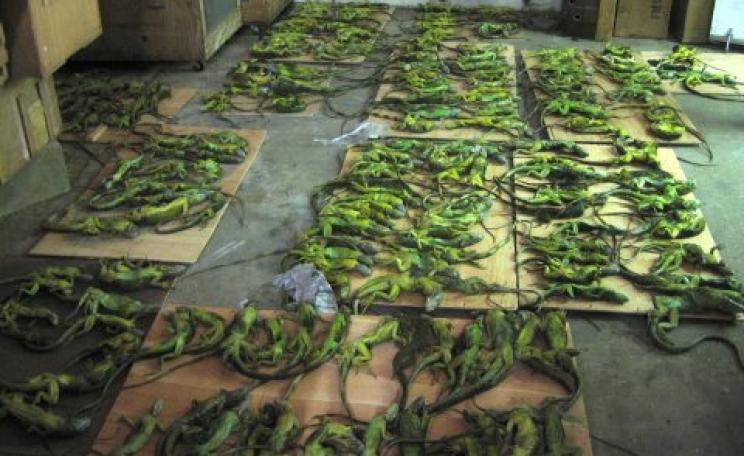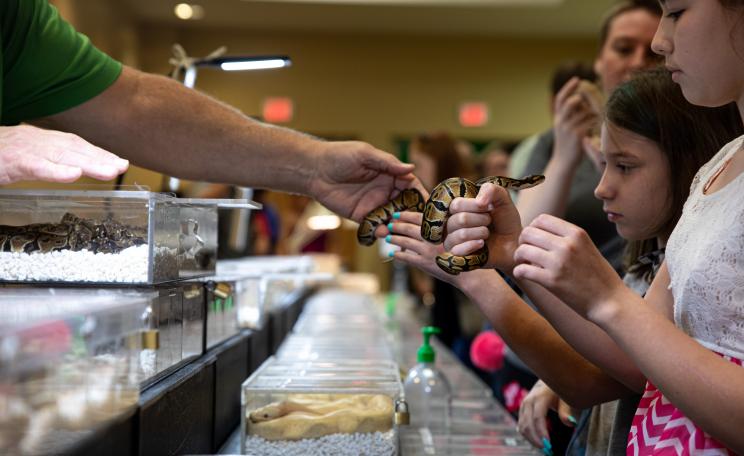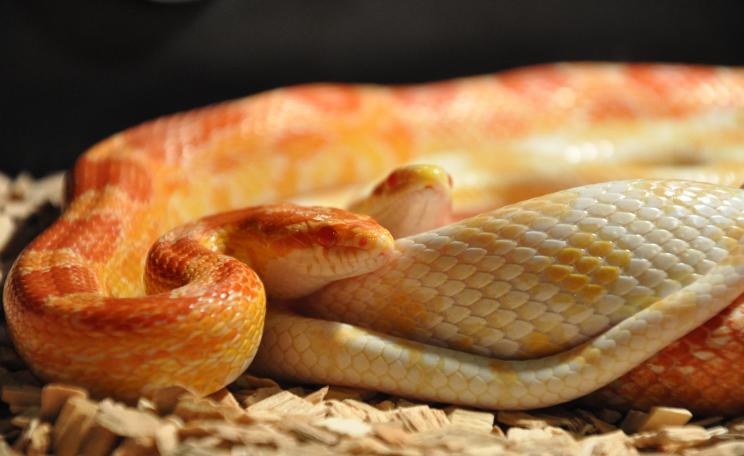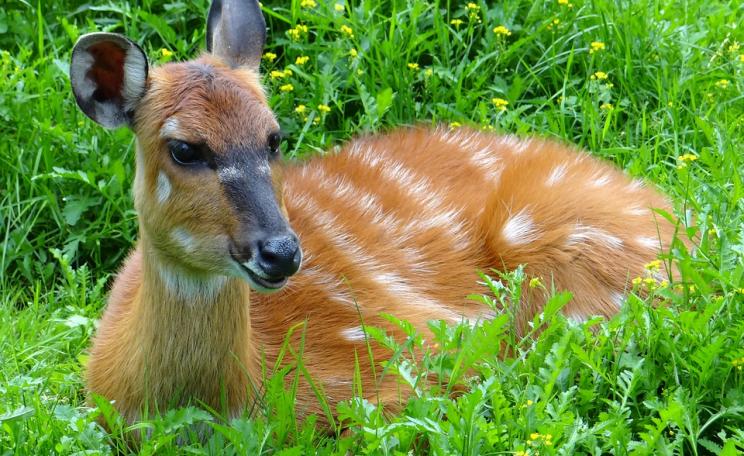If the pet industry cannot even achieve sustainable production (let alone provide a conservation benefit) for the world's most established pet reptile, then what hope does it have with the rest?
Captive-breeding wild animals for pets sounds like a nice alternative to stealing them from nature.
After all, wild-caught animals are commonly manhandled into sacks and boxes, crudely transported, stored under insanitary conditions, and then shipped across the globe to typically face premature and disturbing deaths somewhere between the belly of airplanes, dealer's yards and someone's sitting room.
I say it sounds like a nice alternative, but is it?
In human terms, the wild-caught versus captive-bred alternatives are arguably about as 'good' as raiding an indigenous tribe and conscripting unwilling participants into some overseas eccentric habit, or raising those conscripts in prison then exporting their offspring to the same fate.
For the individuals themselves, whether our hypothetical tribe of humans or real-life animals, the abuses inherent to being captive-bred are as bad as they are to being wild-caught. So 'nice', it is not.
Capture, sale and keeping mortality
Capturing animals from their natural habitat to sell as pets elsewhere is seriously negative for their wellbeing, the species population, and probably for the regional ecology.
For example, capture and pre-sale mortality rates for wild-caught 'aquarium' fishes are commonly 80-98%, and wild populations of certain species, such as clown fish (boosted in trade following the film 'Finding Nemo') have correspondingly declined by 75%.
In addition to fishes, a diversity of animals fall victim to the frivolous wastage of the exotics industry - where 70% mortality for amphibians, reptiles and mammals in just six weeks at wholesalers is 'industry standard'.
This massive and consistent loss excludes the disastrous welfare at the 'consumer end' where, for example, over 90% of fishes and over 75% of reptiles die within a year in the home.
And let us not forget the expanding problem of animal sanctuaries over-laden with unwanted, unmanageable, sick, oversized or mentally disturbed survivors of someone's curiosity fling with wildlife. Many such animals are also released into the local environment and risk becoming invasive alien species.
Breeder animals and their progeny typically face highly restrictive environments, and are subjected to stressful overcrowding or solitary confinement in diminutive draws, stacked on racks. Bare 'essentials' go in, profit-making bio-products come out - hydroponic-style animals, 'grown' to feed the fanatical fanciers of exotic pets.
If the pet industry cannot even achieve sustainable production (let alone provide a conservation benefit) for the world's most established pet reptile, then what hope does it have with the rest?
Invertebrates, fishes, amphibians, reptiles, birds, and mammals, all suffer the same type of deprivation.
Captive-breeding saves animals from what?
If welfare is set aside, not that it should be, but if it is, then does the evidence demonstrate unequivocal conservation and ecological benefits from artificially raising animals? From over 30 years as a wildlife trade investigator I can confidently state that it does not.
Further, in my experience, captive-breeding animals for the pet trade offers a sometimes convenient commercial production strategy in the provision of countless wild animals to unsuspecting consumers, and of course a helpful language for unthorough academics, and gullible overly-accommodating governments.
Regardless, ask a few thorough questions of those who compliment captive-breeding and it becomes clear that solid supporting evidence is hard to come by.
For example, in preparing for this article, I contacted the International Union for the Conservation of Nature's most recommended relevant sources on captive-breeding, with a list of questions about the conservation role played by pet traders and their bedfellow hobbyists, asking:
What exotic pet-related captive-breeding operations with associated successful species conservation or reintroduction results are you aware of that meet the following inclusion criteria:
1. directly or otherwise clearly associated with endeavours by the exotic pet industry?
2. demonstrated as successful in ceasing collection of all wild sourced animals of the same CB species and/or increasing their natural populations for more than five years?
3. scientifically verified by wholly independent parties (ie those not associated with the same breeding or reintroduction work)?
Take an informed guess ...
Now, before you learn the answer, consider this: anecdotal accounts indicate that the exotic pet trade involves 4,000 species.
So, had solid case examples of 'captive-bred - conservation success' for, say, 3,000 species been forthcoming, then such a result would have been shockingly bad - implying that 1,000 species remain unverified, probably wild-caught, and their populations and ecosystems being drawn on or degraded.
But the news was way worse than that. Indeed, not 1,000 species met the survey criteria, actually not 500, 100, or even 10 - in fact, none! Not a single captive-breeding endeavour was reported that met these fundamental verifications.
However, readers should not be too surprised at this finding, because even the most established exotic pet-breeding programmes are nowhere near meeting the simple criteria mentioned earlier to claim successful and sustainable conservation benefits.
Take the case of one of the world's most popular pet reptiles - the red-eared terrapin or 'slider turtle' as it is known in the United States. Bred on 'farms' in the southern USA, these baby reptiles are shipped in millions to foreign lands - domestic trade was banned in 1975 following major epidemics of turtle-associated human salmonellosis. Nevertheless, the baby turtles are captive-bred.
What was unknown for years to the scientific community was that the adults that lay the eggs for incubation are significantly wild-sourced. By doing this, the 'farms' (more correctly referred to as 'ranches' because they are not closed-cycle) deplete the species prime breeders - the large females.
Rapid population crashes follow, and not only for the red-ear, as their demise causes predators to divert from targeting the should-be abundant sliders to even more vulnerable prey. Additional impacts are also felt because ranchers' traps randomly net and often drown other species.
If the pet industry cannot even achieve sustainable production (let alone provide a conservation benefit) for the world's most established pet reptile, then what hope does it have with the rest?
Identifying captive-bred from wild-caught animals
Identifying legal and illegal animals from thousands of species is virtually impossible. Similarly, knowing captive-bred from wild-caught animals of the same (or many 'lookalike') species is extremely challenging.
Species diversity in trade is overwhelming, but further complications arise as recent research shows that what appears to be a single species may actually be several 'hiding' as one, according to genetic analysis.
Pet traders often misdescribe (so let's describe it correctly - lie) about the origins of animals, easing contraband species through Customs. In fact, so frequent is the task of identifying wild-caught from captive-bred animals that border control officers are now offered special training courses.
Worryingly, breeders who experiment at producing colour variants, hybrids, 'morphs' also raise the growing spectre of pathologies such as 'inclusion body disease' and 'wobble syndrome', as well as producing what may be hardier invasive species.
A paradigmatic conservation failure
Artificial production is undoubtedly increasing, although claims that it accounts for '90%' of traded pet animals constitute evidence-deficient hyperbole.
Coincidence or not, increased captive-breeding frequently tallies with expanding trade, and is well-known to provide market demand for wild-sourced animals, which of course increases conservation threats.
The exotic pet industry is a major constituent of global wildlife abuse and ecological harm that cannot be fixed through any means other than positive lists (species independently verified as 'safe' to sell and keep) or outrights bans.
Yet, with tedious inevitability, captive-breeding proponents misleadingly point to its conservation 'benefits', and many others jump all too eagerly onto this 'politically correct' bandwagon.
However, inhumane production conditions aside, the technological and promotional successes in captive-breeding are more than matched by its paradigmatic conservation failure.
Clifford Warwick PGDipMedSci CBiol CSci EurProBiol FOCAE FRSB is a Consultant Biologist & Medical Scientist. LinkedIn
Also by Clifford Warwick on The Ecologist: 'The exotic pet trade is a global evil that must be stopped'.
For more information please contact:
Sources without links
Arena, P, and Steedman, C., and Warwick, C. (2012), 'Amphibian and reptile pet markets in the EU an investigation and assessment'. Animal Protection Agency, Animal Public, International Animal Rescue, Eurogroup for Wildlife and Laboratory Animals, Fundación para la Adopción, el Apadrinamiento y la Defensa de los Animales, 52pp.
TRAFFIC (2012), 'Captive-bred or wild-taken?', Traffic International, Cambridge, UK pp 10.
Warwick, C. (1986) 'Red-eared terrapin farms and conservation', Oryx, 20:37-40.
Warwick, C., Steedman, C., & Holford, T. (1990), 'Ecological implications of the red-eared turtle trade'. Texas J. Sci. 42:419-22.







